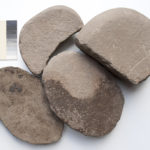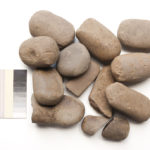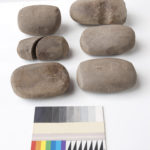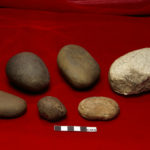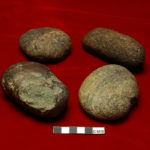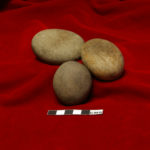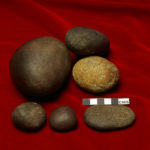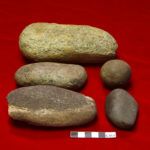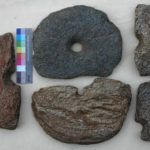A fine assemblage of stone tools including saddle querns, quern rubbers and cobble tools was found during recent excavations at Windwick by Martin Carruthers, University of the Highlands and Islands.
The stone tools were used for the construction of the souterrain and above ground structure as well as for activities within the completed buildings. There appears to be some reuse of an earlier assemblage of pounder/grinders to build the souterrain as demonstrated by the reuse patterns on some of the tools. We cannot be sure just what the stone tools were used for within the souterrain but several, including the saddle querns were broken and the scattered fragments of the refitted pounder/grinder suggest some mobility of the fragments in antiquity. Above ground, the stone tools appear to have been reused in structural cuts and fills whilst the presence of the pumice and Skaill knife in above ground layers suggests the possibility of different activities to that below ground.
Saddle querns and quern rubbers form quite large assemblages at some sites of this date and at High Pasture Cave, Skye they were an important feature of the closing deposits of the Early Iron Age use of the cave (Steven Birch pers.comm.). At Bayanne, Shetland; and Mine Howe and Howe in Orkney saddle querns were also numerous but found outwith their main context of use in redeposited structural contexts or even reused as anvils or tethering stones. The saddle querns at Windwick, though broken appear to be in primary deposits and it is possible that these, together with the broken cobbles represent some kind of closing deposit.
